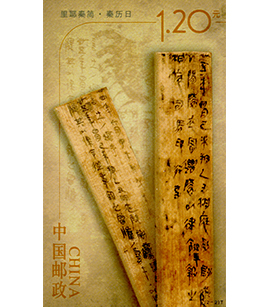Unification of China by Qin

FILE PHOTO: A stamp with images of the Liye bamboo slips of the Qin Dynasty
It is widely acknowledged that the “Great Unification” in Chinese history commenced during the Qin Dynasty (221–207 BCE). In 221 BCE, the Qin wars of conquest brought an end to the Warring States Period, a tumultuous era marked by warfare and fragmentation, resulting in the annexation of all rival states.
King Zheng of Qin (259–210 BCE), later known as Qin Shi Huang, established the first centralized multi-ethnic country in Chinese history. The Qin abolished all the vassal states that had existed throughout the preceding Xia, Shang and Western Zhou dynasties, and established a two-tier local administrative system known as jun-xian system, which had served as a model for government throughout the history of imperial China. In order to consolidate his power, Qin Shi Huang standardized writing, a crucial measure to overcome cultural barriers between different regions. He also standardized systems of currency, weights, measures, and legal codes, which had previously exhibited variations across the vassal states. These practices, along with the jun-xian system, played a crucial role in the “Great Unification” of China for over 2,000 years.
Although the Qin was a short-lived dynasty, it had a profound influence on Chinese history. After the fall of Qin, imperial China continued to develop for over 2000 years. Though political systems of different dynasties varied, certain core principles remained unchanged. In a sense, the institutional traditions that have evolved and accumulated throughout Chinese history consist of a unified multi-ethnic country, a centralized administration, a county-based local governance system, a largely unchanged writing system, and ritual codes that have been passed down through generations.
Edited by REN GUANHONG

 PRINT
PRINT CLOSE
CLOSE